Derivative-Free Observability Analysis for Sensor Placement Optimization of Bioinspired Flexible Flapping Wing System
Abstract
:1. Introduction
2. System Model
2.1. Flexible Wing Flapping Dynamics
2.2. Neural Encoding Measurement Model
3. Traditional Observability Analysis for Deterministic System with Memory
3.1. Linear System with Memory
3.2. Nonlinear System with Memory
3.3. Limitations of Traditional Observability Analysis
4. gPC-Based Observability Analysis for Stochastic System with Memory
4.1. The Generalized Polynomial Chaos Expansion
4.2. Observability Rank Condition
| Algorithm 1 gPC-based Observability Analysis Procedure |
|
4.3. Degree of Observability
- 1.
- Condition Number: The condition number is the ratio of the maximum singular value to the minimum singular value, which is utilized to show the numerical stability of the system states, and is provided bywhere and are the maximal and minimal singular values of , respectively.Suppose that the condition number is enormous or even goes to infinity, the observability-coefficient matrix is ill-conditioned, and the system is weakly observable; this implies that certain states are hard to observe. However, if the condition number is close to one, is well-conditioned and the system is brawny observable. Note that all system states are considered equally observable when the condition number equals one.
- 2.
- Contribution Rate: Two different equations for the contribution rate are provided in this paper, both of which are regarded as quantitative indices of each state’s observability. The first contribution rate, , is defined as the contribution of the ith state to the uncertainty of all measurements. According to the surrogate model, it is provided bywhich represents the influence of a specific state on the measurements. The ith state is brawnier observable when its first contribution rate is closer to one. Instead, the ith state is weakly observable as approaches zero.The second contribution rate, , is the maximum contribution of the ith state to each measurement. We define the proportion of the contribution of the ith state to the variance of the lth measurement as , that is,where the numerator means the contribution of the ith state to the variance of the lth measurement and the denominator denotes the variance of the lth measurement.Hence, equals the maximum of . As in the first contribution rate, the larger the second contribution rate is, the more the state is brawnier observable.
- 3.
- Interference Rate: If the contribution of the ith state to the variance of the lth measurement, , is smaller than the measurement noise variance , the changes in measurements contain too much environmental interference, and the initial state is difficult to distinguish from noisy measurements with a high confidence level.Therefore, we define the proportion of the measurement noise variance to the variance of the lth measurement as the interference rate:If the interference rates are larger than all the corresponding contribution of any states , the system is considered to be weakly observable due to noisy measurements.To simplification simulation, an equivalent index called the interference binary value is used:When equals zero, the measurement noise has negligible effect on observability analysis. Inversely, the states are hard to infer from noisy measurements when equals one.
4.4. Equivalence between the Traditional and Proposed Approaches
5. Simulations
5.1. Lorenz System with Memory
5.1.1. Lie Derivative-Based Observability Analysis
5.1.2. Empirical Observability Gramian Analysis
5.1.3. gPC-Based Observability Analysis
5.2. Bioinspired Flexible Flapping Wing System
6. Observability-Based Optimal Sensor Placement
7. Discussion and Conclusions
Author Contributions
Funding
Institutional Review Board Statement
Informed Consent Statement
Data Availability Statement
Conflicts of Interest
References
- Mishra, S.; Tripathi, B.; Garg, S.; Kumar, A.; Kumar, P. Design and development of a bio-inspired flapping wing type micro air vehicle. Procedia Mater. Sci. 2015, 10, 519–526. [Google Scholar] [CrossRef] [Green Version]
- Van Truong, T.; Nguyen, Q.V.; Lee, H.P. Bio-inspired flexible flapping wings with elastic deformation. Aerospace 2017, 4, 37. [Google Scholar] [CrossRef] [Green Version]
- Bhatti, M.Y.; Lee, S.G.; Han, J.H. Dynamic Stability and Flight Control of Biomimetic Flapping-Wing Micro Air Vehicle. Aerospace 2021, 8, 362. [Google Scholar] [CrossRef]
- Gollisch, T.; Meister, M. Eye smarter than scientists believed: Neural computations in circuits of the retina. Neuron 2010, 65, 150–164. [Google Scholar] [CrossRef] [PubMed] [Green Version]
- Fox, J.L.; Fairhall, A.L.; Daniel, T.L. Encoding properties of haltere neurons enable motion feature detection in a biological gyroscope. Proc. Natl. Acad. Sci. USA 2010, 107, 3840–3845. [Google Scholar] [CrossRef] [PubMed] [Green Version]
- Pratt, B.; Deora, T.; Mohren, T.; Daniel, T. Neural evidence supports a dual sensory-motor role for insect wings. Proc. R. Soc. Biol. Sci. USA 2017, 284, 20170969. [Google Scholar] [CrossRef] [PubMed] [Green Version]
- Boyacioglu, B.; Morgansen, K.A. Bioinspired observability analysis tools for deterministic systems with memory in flight applications. In Proceedings of the AIAA Scitech 2021 Forum, Virtual Event, 11–15 & 19–21 January 2021; p. 1679. [Google Scholar]
- Hinson, B.T.; Morgansen, K.A. Gyroscopic sensing in the wings of the hawkmoth Manduca sexta: The role of sensor location and directional sensitivity. Bioinspir. Biomim. 2015, 10, 056013. [Google Scholar] [CrossRef] [PubMed]
- Chen, C.T. Linear System Theory and Design; Saunders College Publishing: Philadelphia, PA, USA, 1984. [Google Scholar]
- Rouhani, A.; Abur, A. Observability analysis for dynamic state estimation of synchronous machines. IEEE Trans. Power Syst. 2016, 32, 3168–3175. [Google Scholar] [CrossRef]
- Seo, M.G.; Tahk, M.J. Observability analysis and enhancement of radome aberration estimation with line-of-sight angle-only measurement. IEEE Trans. Aerosp. Electron. Syst. 2015, 51, 3321–3331. [Google Scholar]
- Krener, A.J.; Ide, K. Measures of unobservability. In Proceedings of the 48h IEEE Conference on Decision and Control (CDC) Held Jointly with 2009 28th Chinese Control Conference, Shanghai, China, 15–18 December 2009; pp. 6401–6406. [Google Scholar]
- Hodzic, E.; Morgansen, K.A. Simulation-Based Observability Analysis Tools for Experimental Aerospace Applications. In Proceedings of the 2021 American Control Conference (ACC), New Orleans, LA, USA, 25–28 May 2021; pp. 3010–3017. [Google Scholar]
- Hinson, B.T.; Binder, M.K.; Morgansen, K.A. Path planning to optimize observability in a planar uniform flow field. In Proceedings of the 2013 American Control Conference, Washington, DC, USA, 17–19 June 2013; pp. 1392–1399. [Google Scholar]
- Zheng, Z.; Xu, Y.; Mili, L.; Liu, Z.; Peng, L.; Wang, Y. Derivative-free observability analysis of a stochastic dynamical system. IEEE Trans. Netw. Sci. Eng. 2021, 8, 2426–2437. [Google Scholar] [CrossRef]
- Zheng, Z.; Xu, Y.; Mili, L.; Liu, Z.; Korkali, M.; Wang, Y. Observability analysis of a power system stochastic dynamic model using a derivative-free approach. IEEE Trans. Power Syst. 2021, 36, 5834–5845. [Google Scholar] [CrossRef]
- Mohren, T.L.; Daniel, T.L.; Brunton, S.L.; Brunton, B.W. Neural-inspired sensors enable sparse, efficient classification of spatiotemporal data. Proc. Natl. Acad. Sci. USA 2018, 115, 10564–10569. [Google Scholar] [CrossRef] [PubMed] [Green Version]
- Krantz, S.G.; Parks, H.R. The Implicit Function Theorem: History, Theory, and Applications; Springer Science & Business Media: Berlin/Heidelberg, Germany, 2002. [Google Scholar]
- Ren, Z.; Li, W.; Billinton, R.; Yan, W. Probabilistic power flow analysis based on the stochastic response surface method. IEEE Trans. Power Syst. 2015, 31, 2307–2315. [Google Scholar] [CrossRef]
- Xiu, D.; Karniadakis, G.E. The Wiener–Askey polynomial chaos for stochastic differential equations. Siam J. Sci. Comput. 2002, 24, 619–644. [Google Scholar] [CrossRef]
- Willmott, A.P.; Ellington, C.P. The mechanics of flight in the hawkmoth Manduca sexta. I. Kinematics of hovering and forward flight. J. Exp. Biol. 1997, 200, 2705–2722. [Google Scholar] [CrossRef] [PubMed]
- Hedrick, T.L.; Daniel, T.L. Flight control in the hawkmoth Manduca sexta: The inverse problem of hovering. J. Exp. Biol. 2006, 209, 3114–3130. [Google Scholar] [CrossRef] [PubMed] [Green Version]
- Reade, J.; Jankauski, M. Investigation of chordwise functionally graded flexural rigidity in flapping wings using a two-dimensional pitch-plunge model. Bioinspir. Biomim. 2022, 17, 66007. [Google Scholar] [CrossRef] [PubMed]
- Dickerson, B.H.; Aldworth, Z.N.; Daniel, T.L. Control of moth flight posture is mediated by wing mechanosensory feedback. J. Exp. Biol. 2014, 217, 2301–2308. [Google Scholar] [CrossRef] [PubMed]
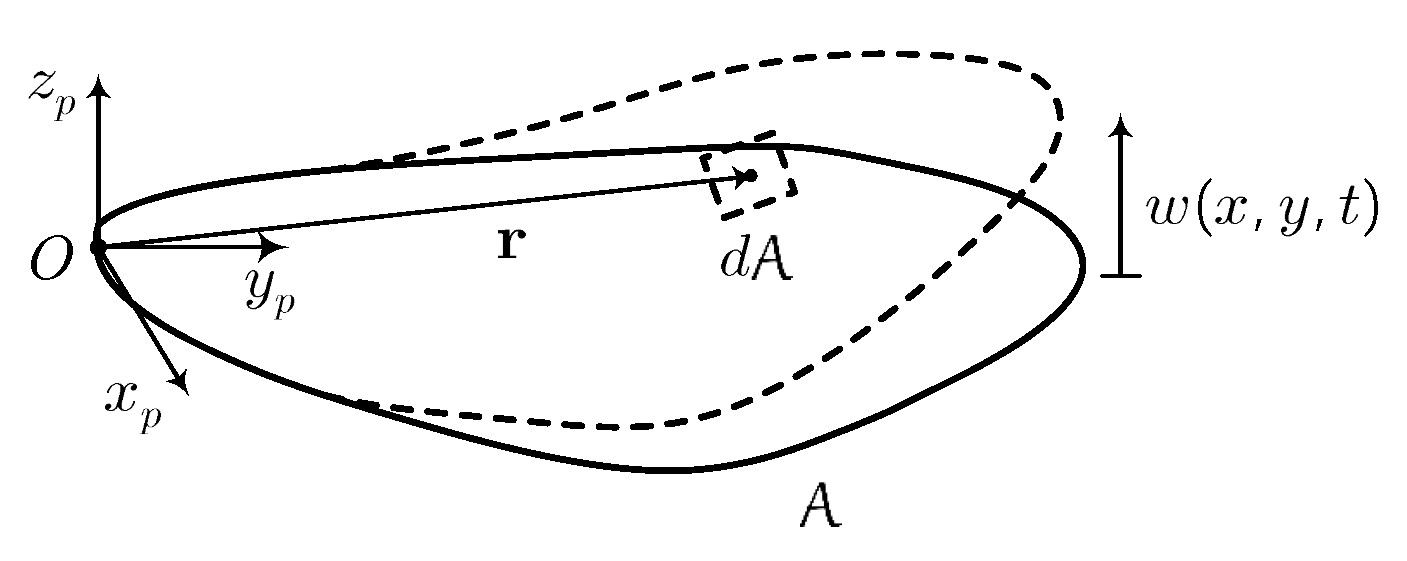
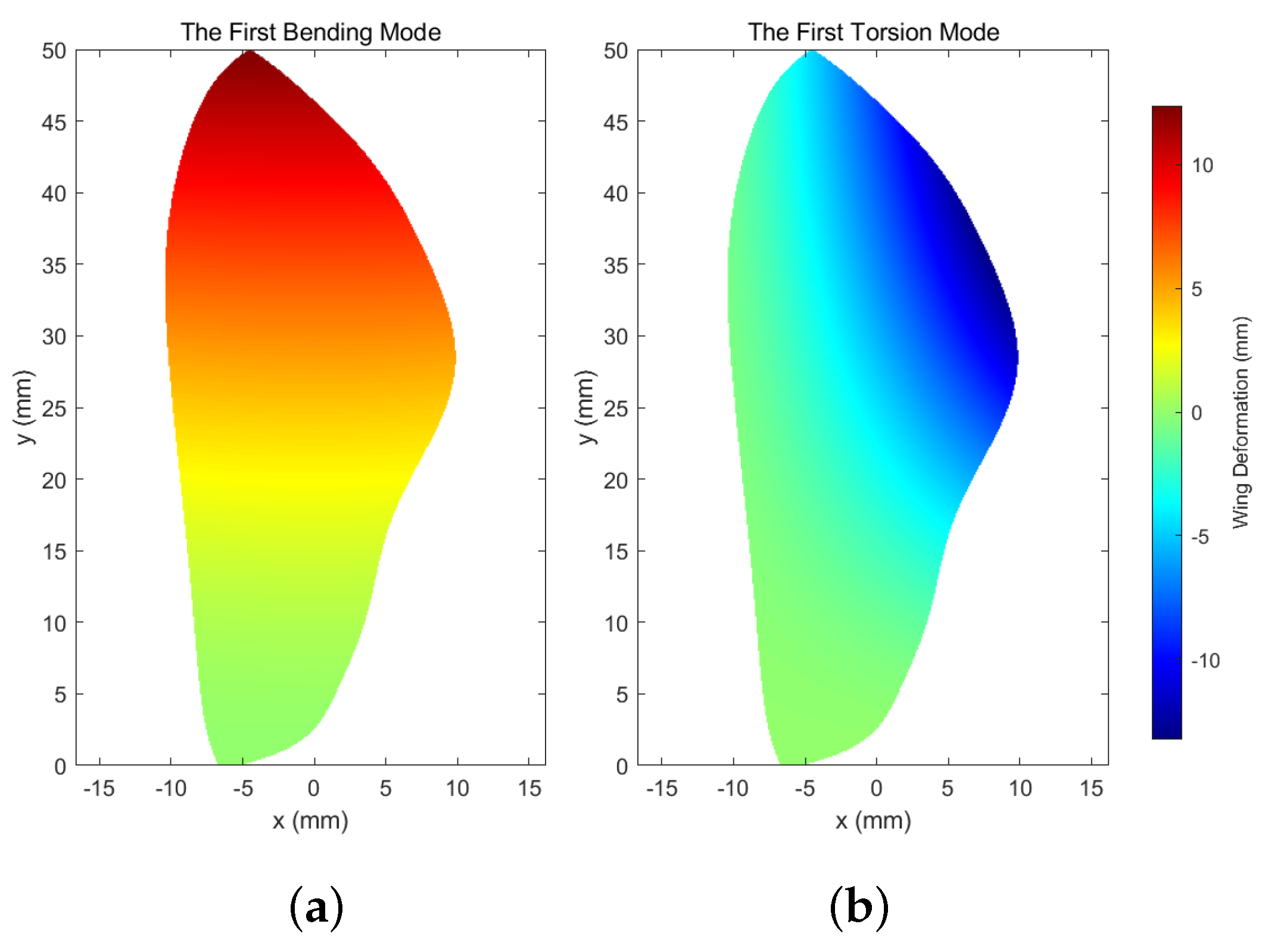



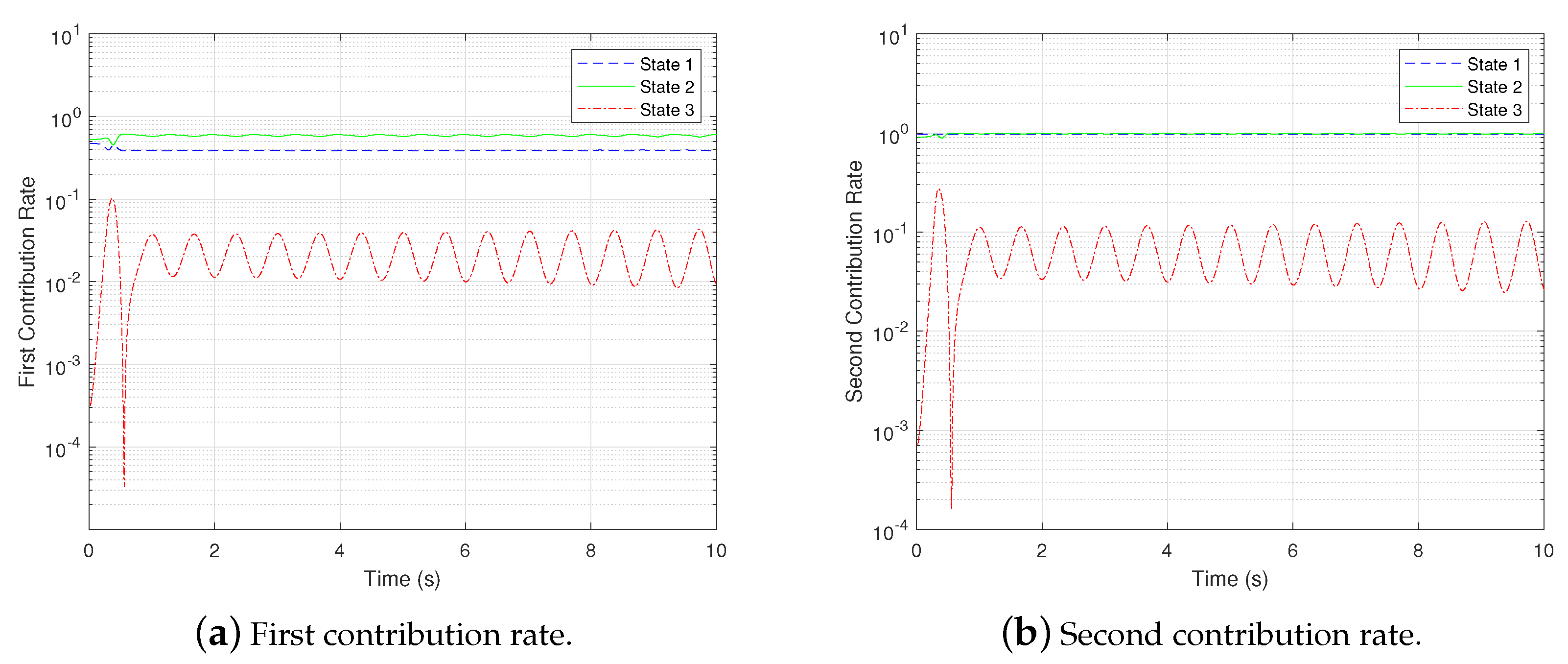
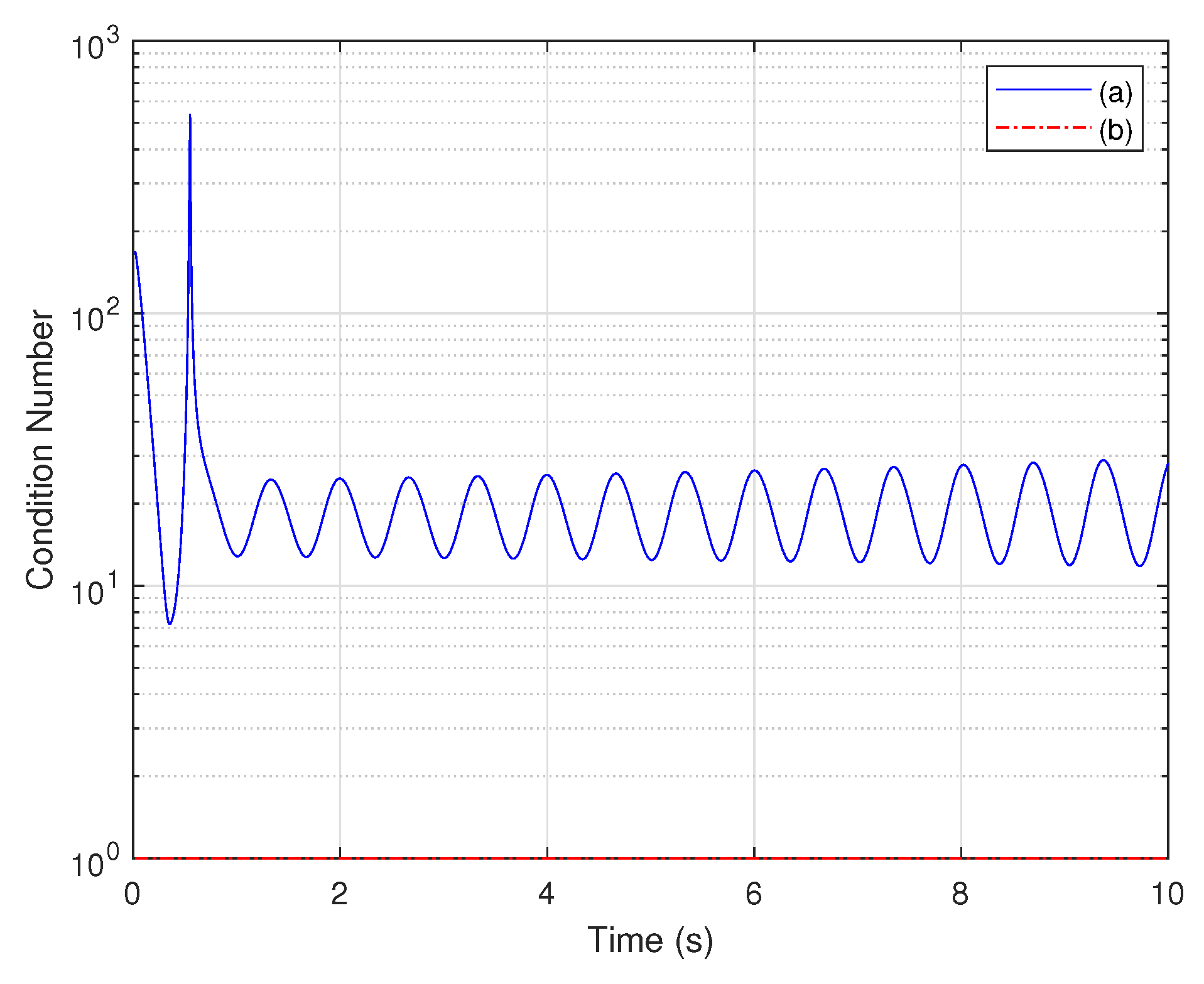
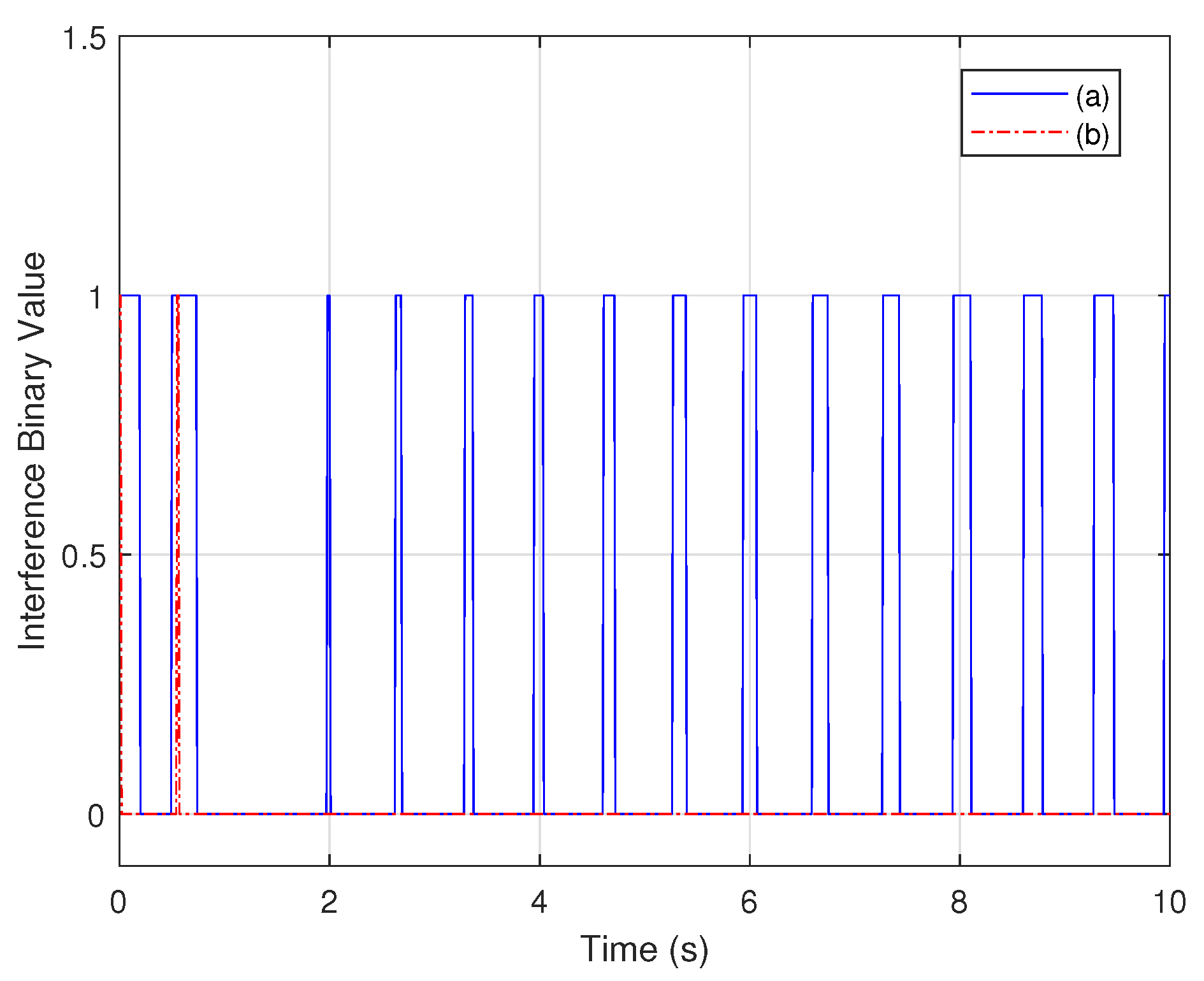
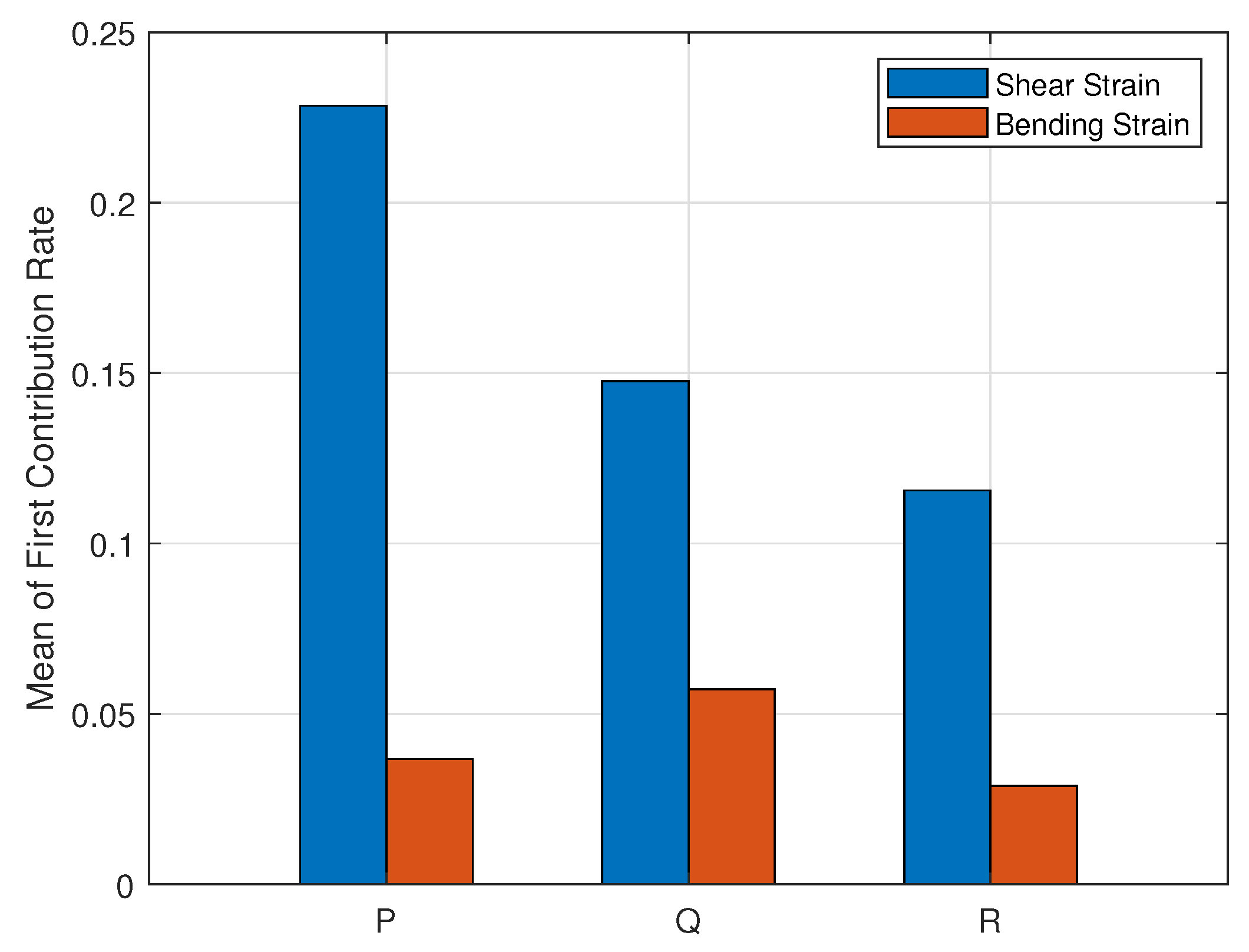
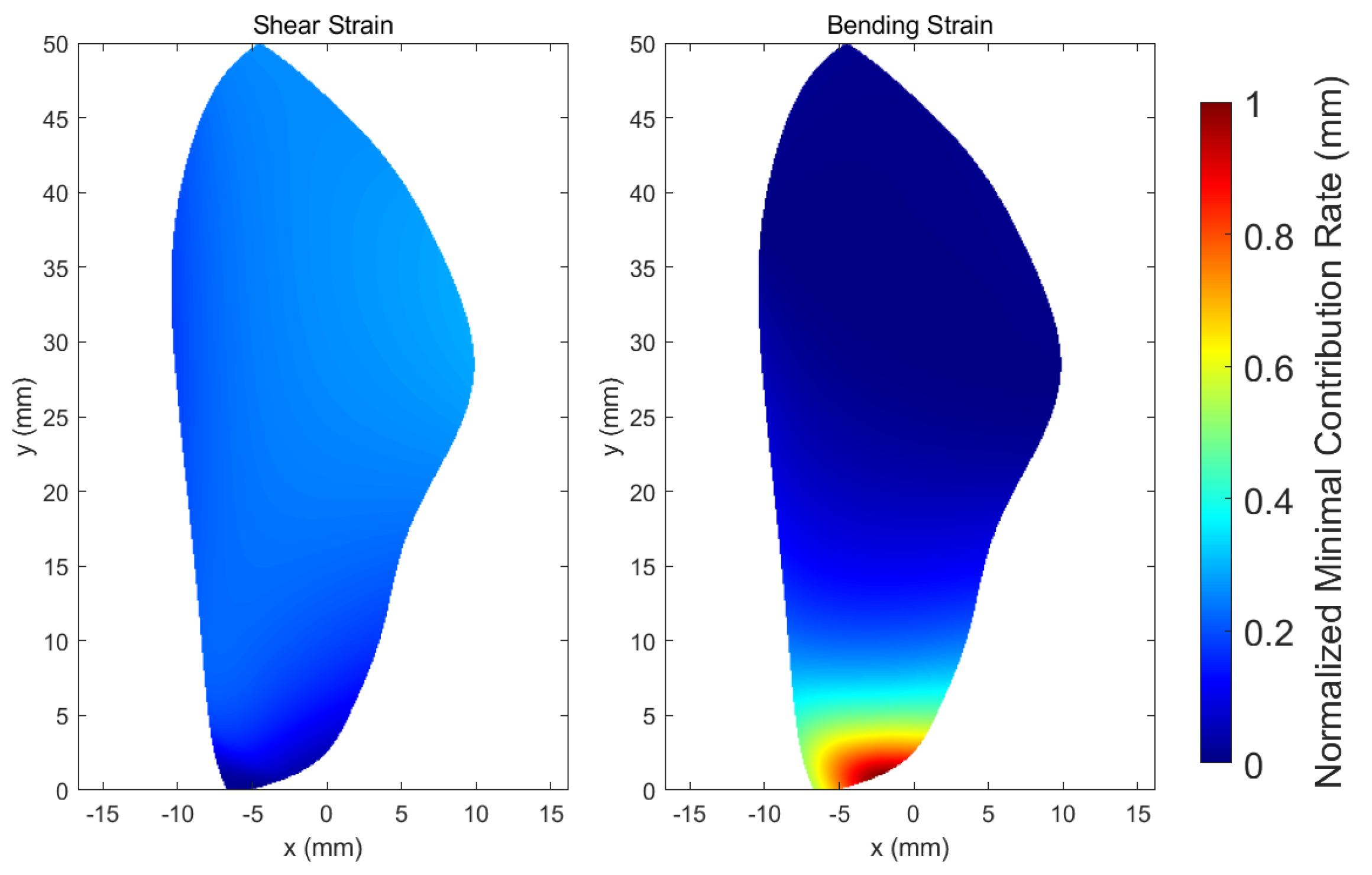
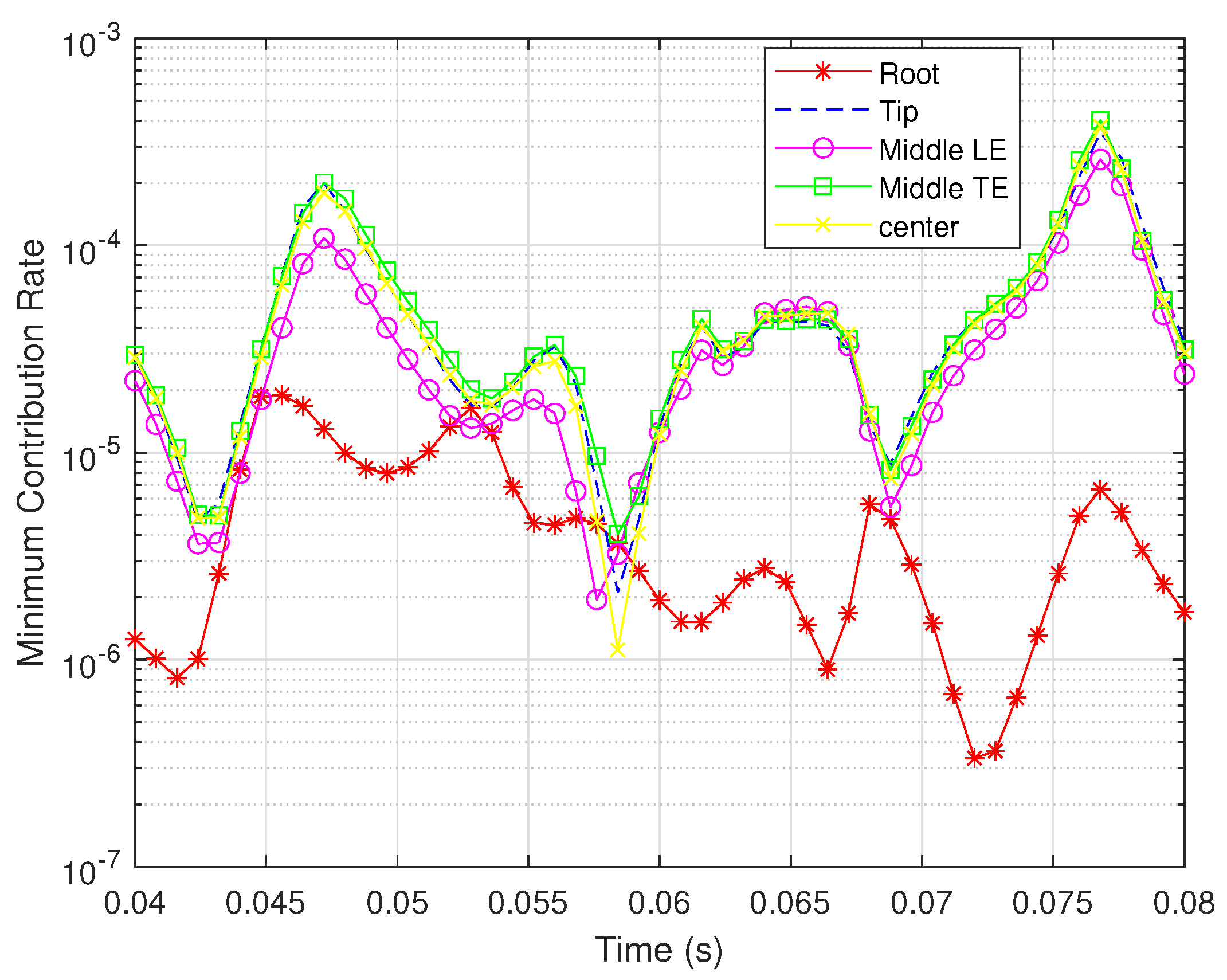
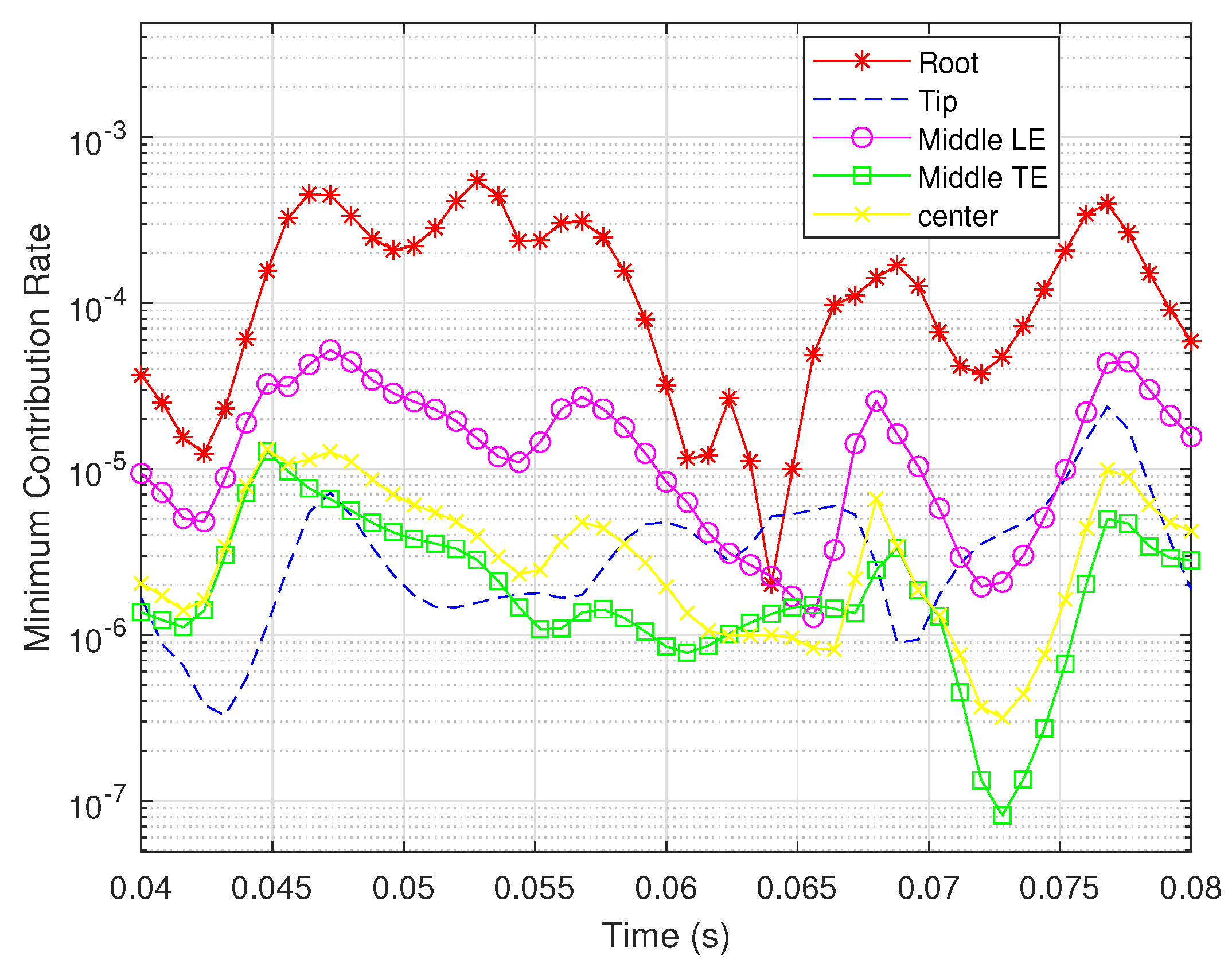
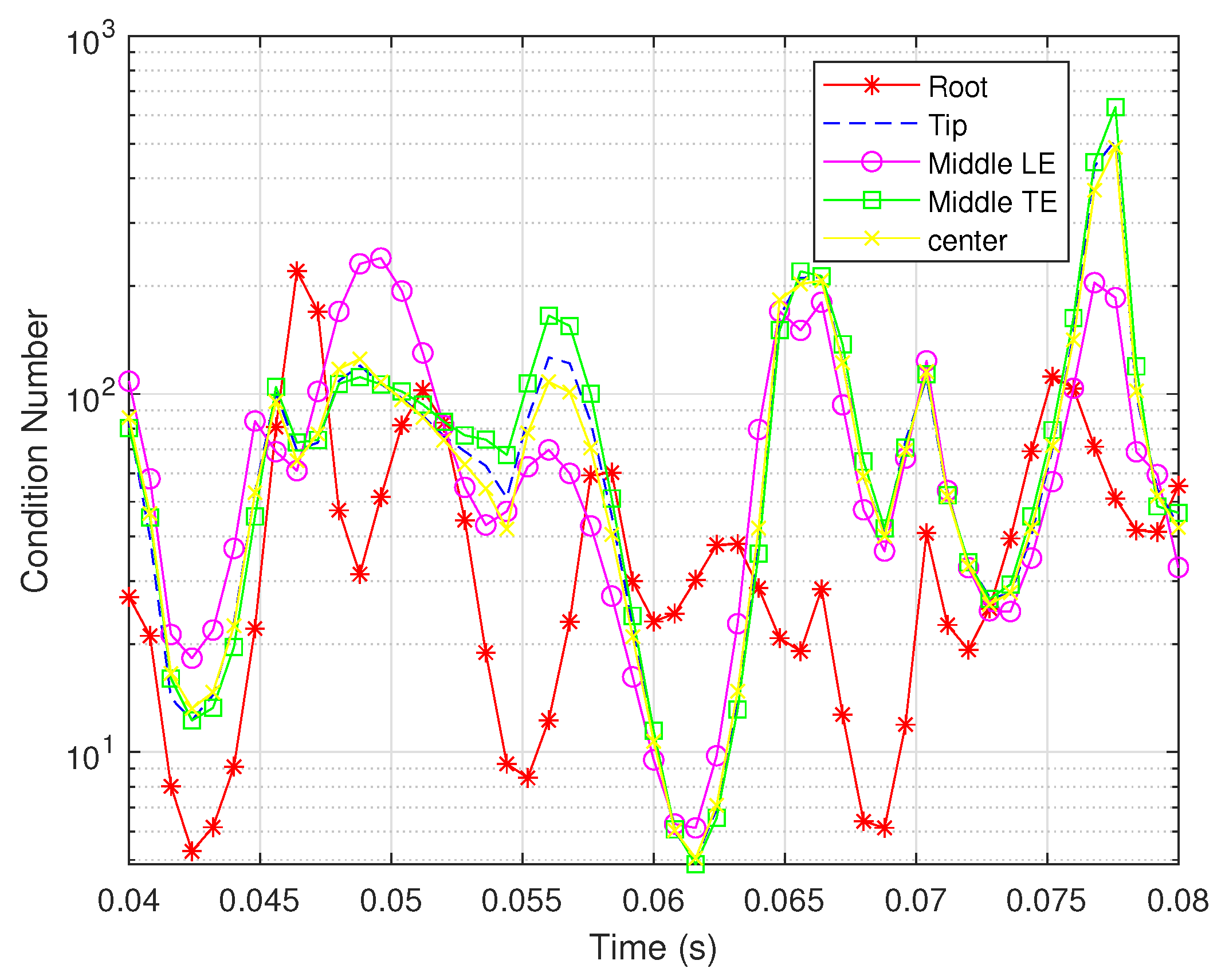
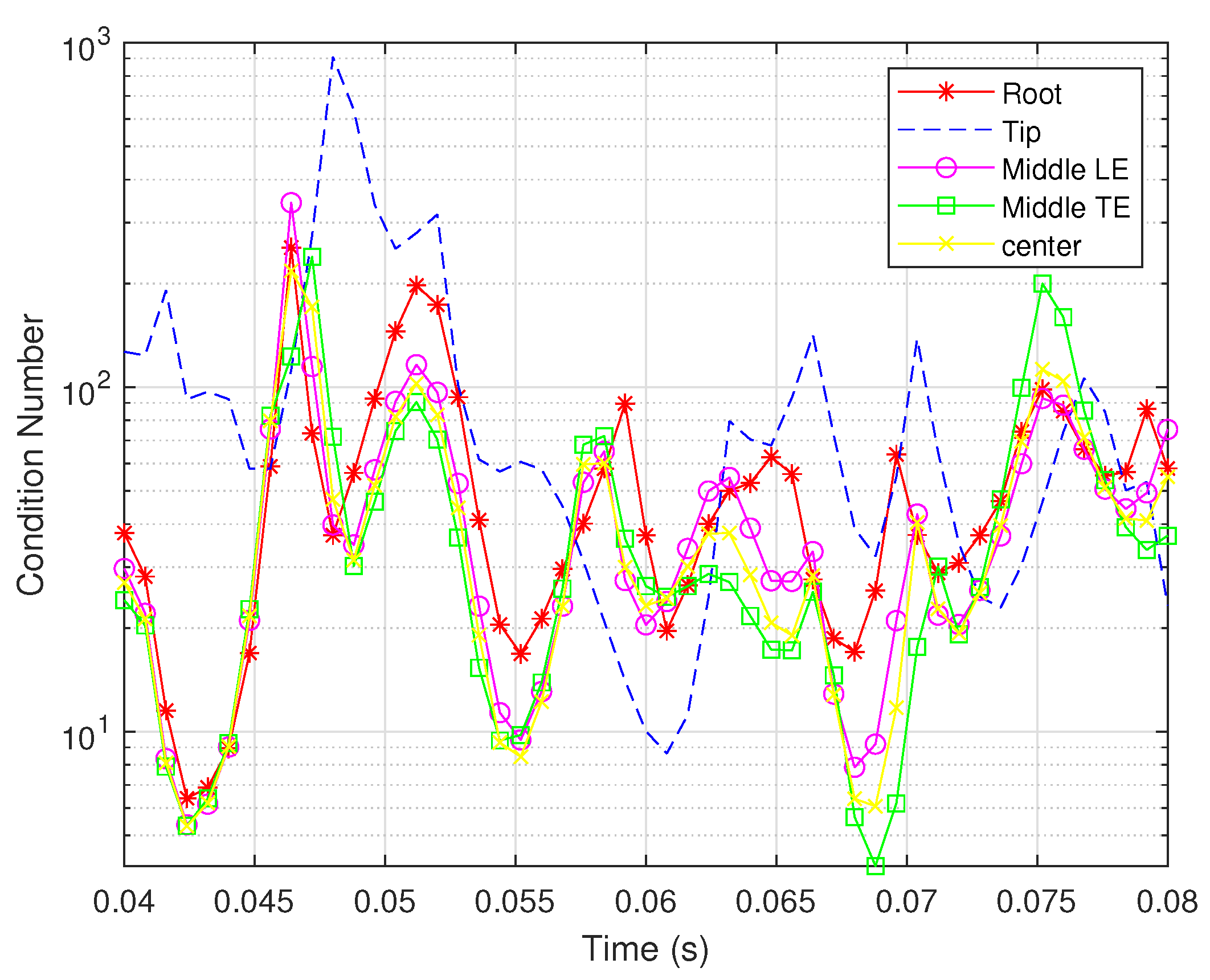
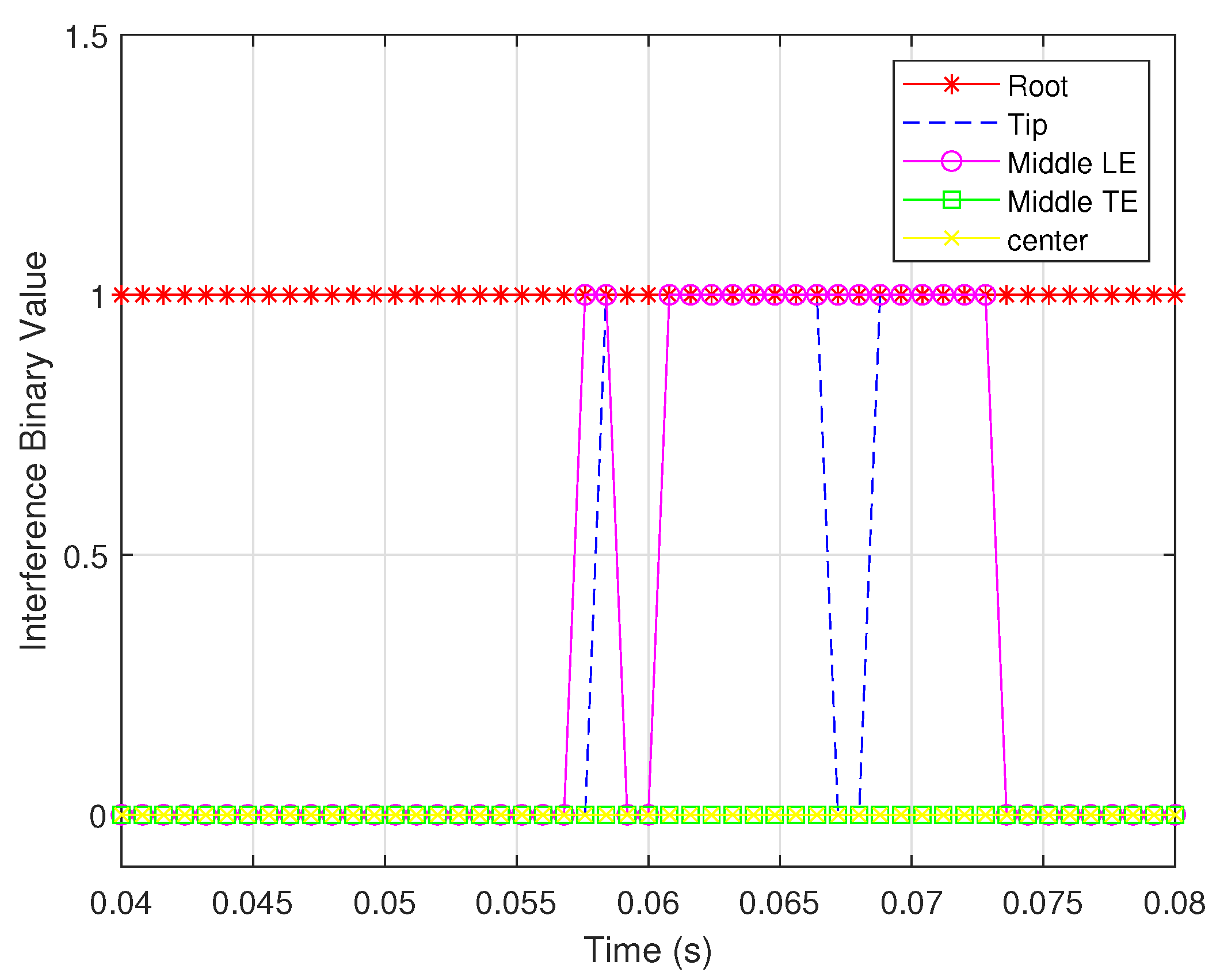
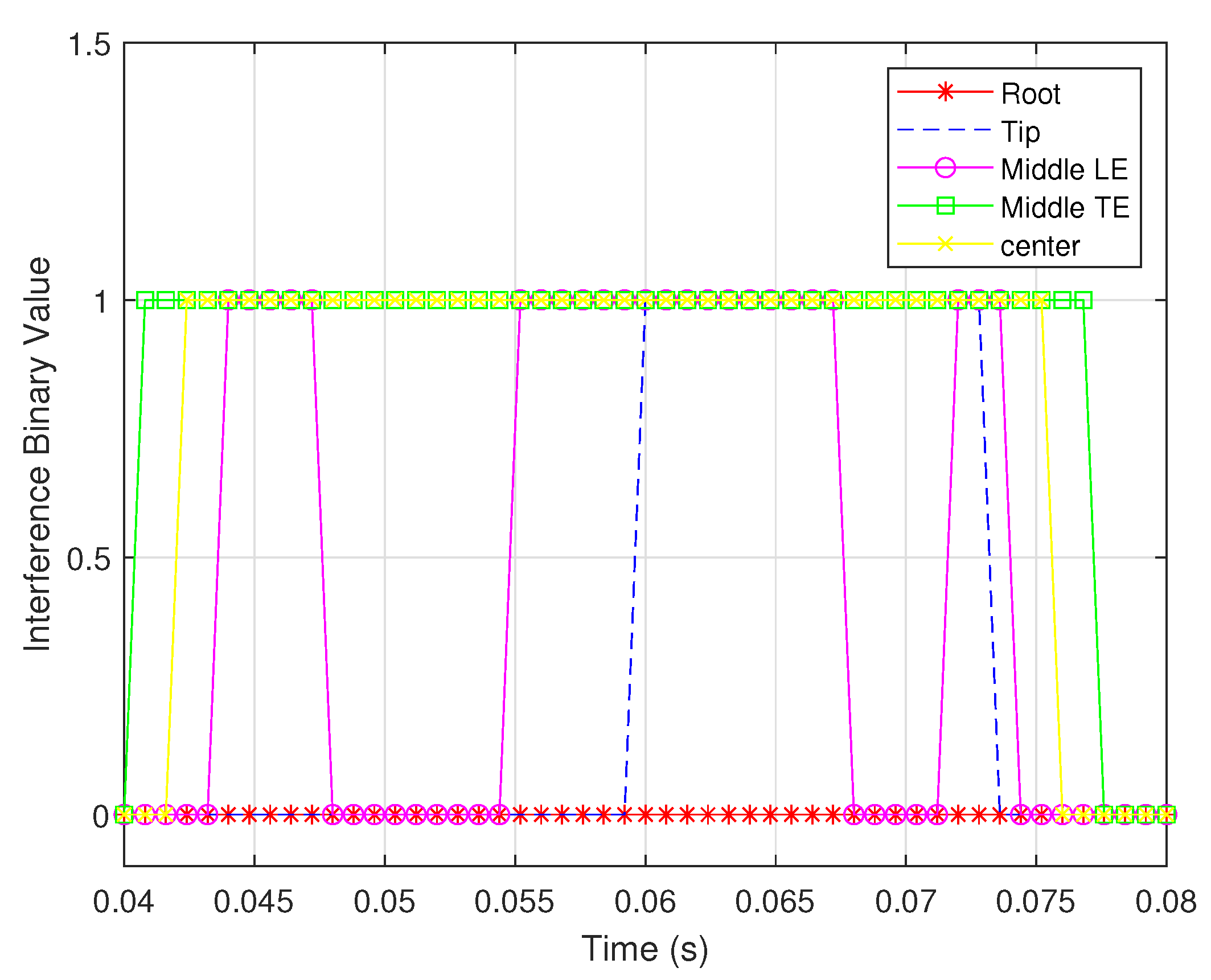

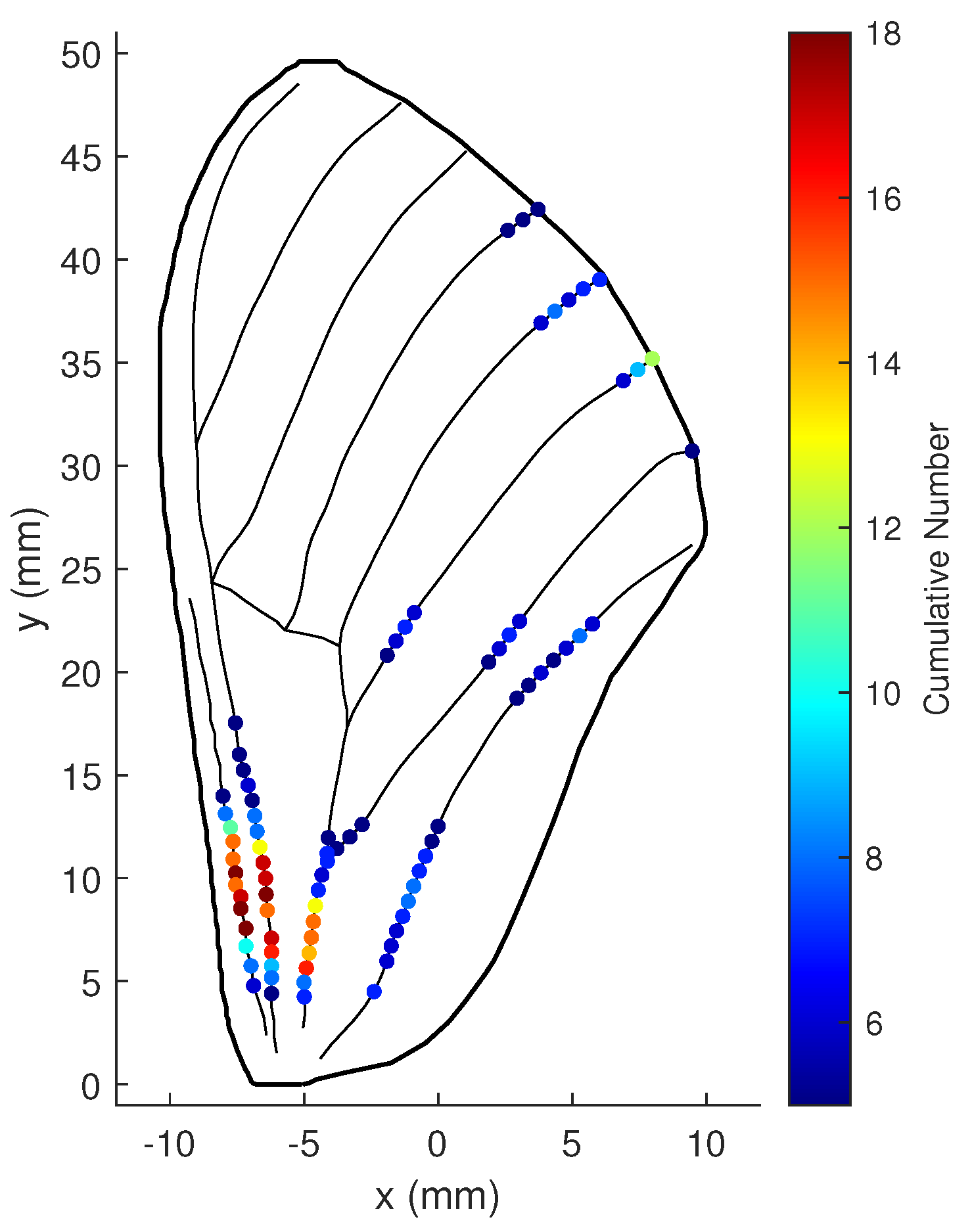
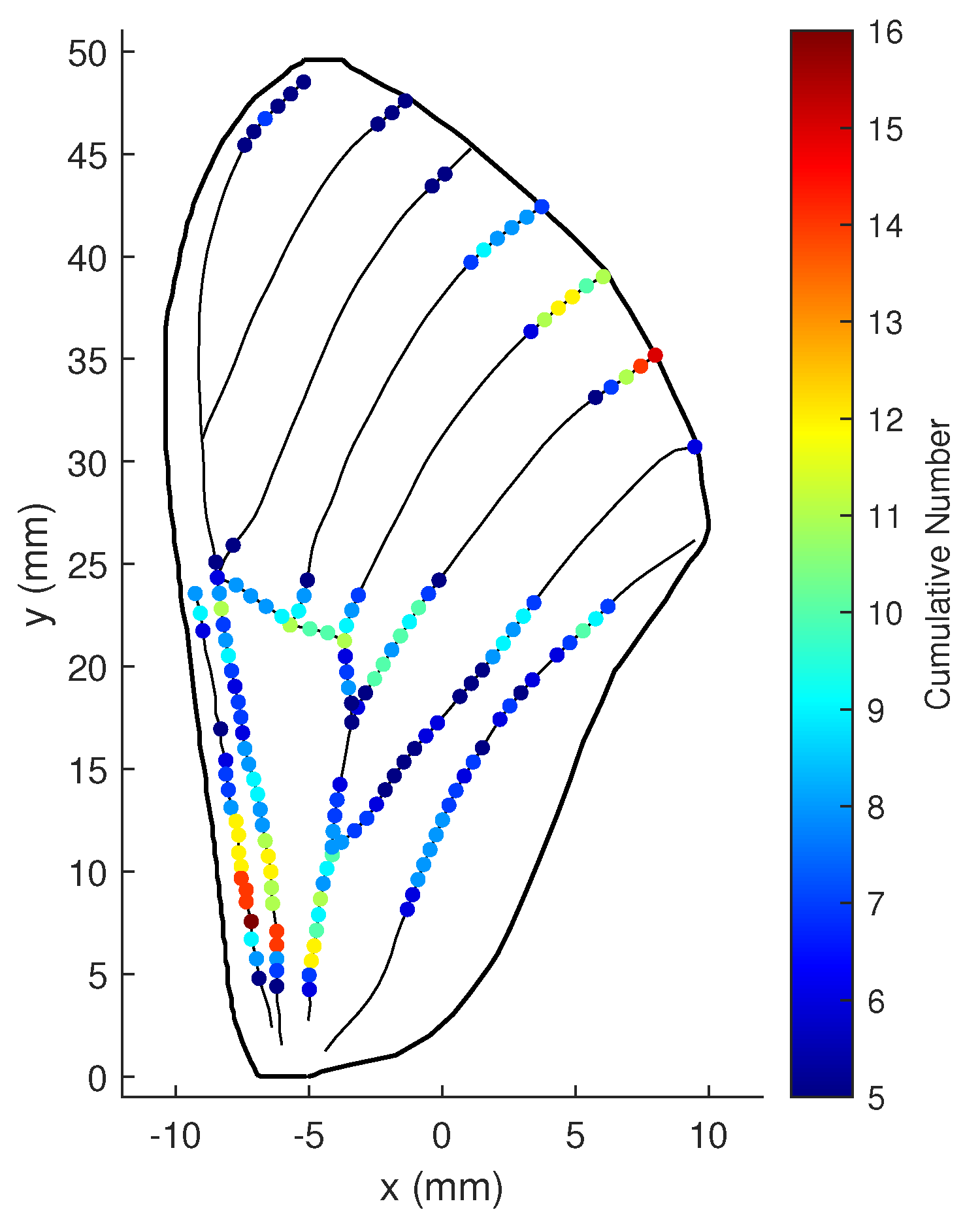
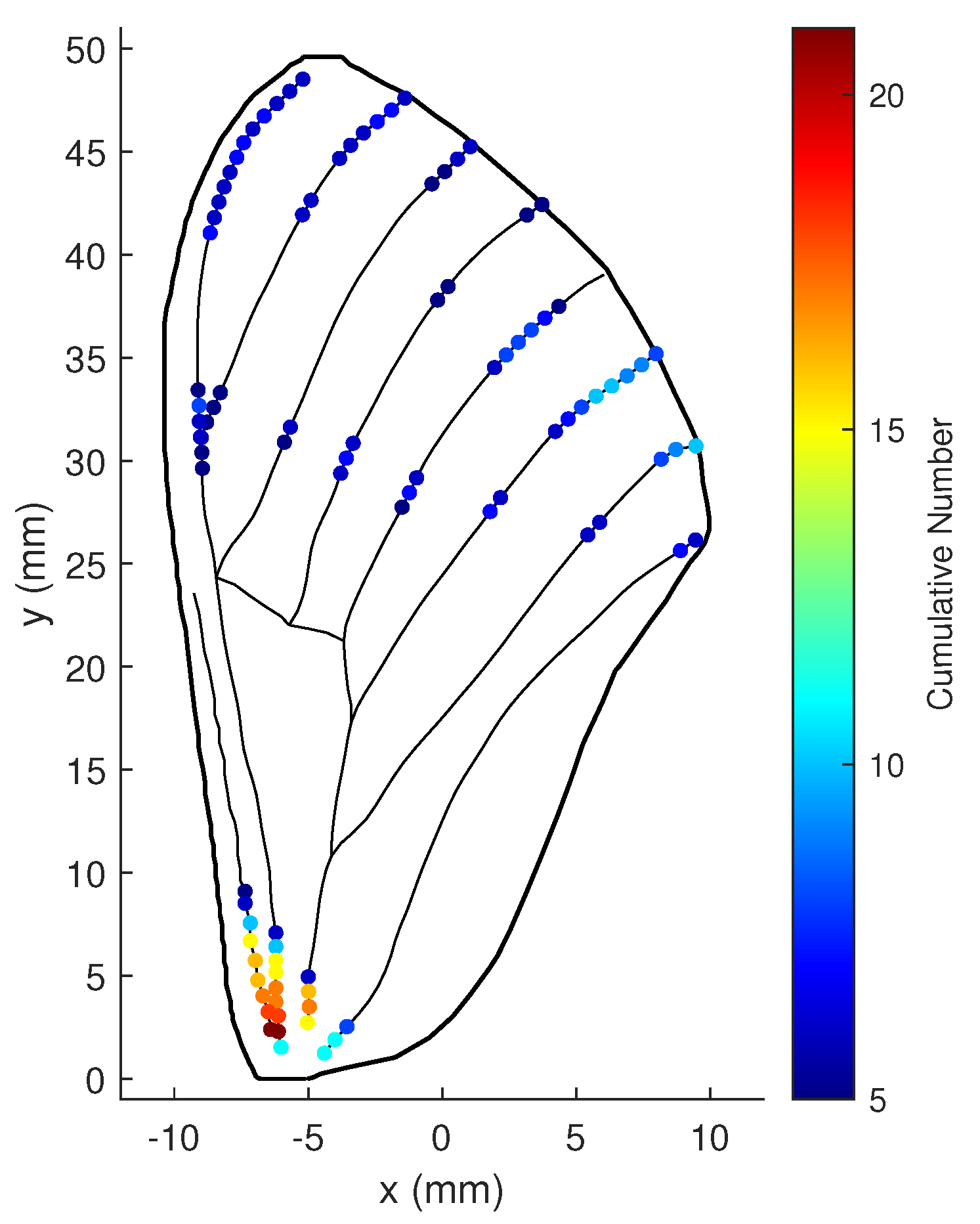
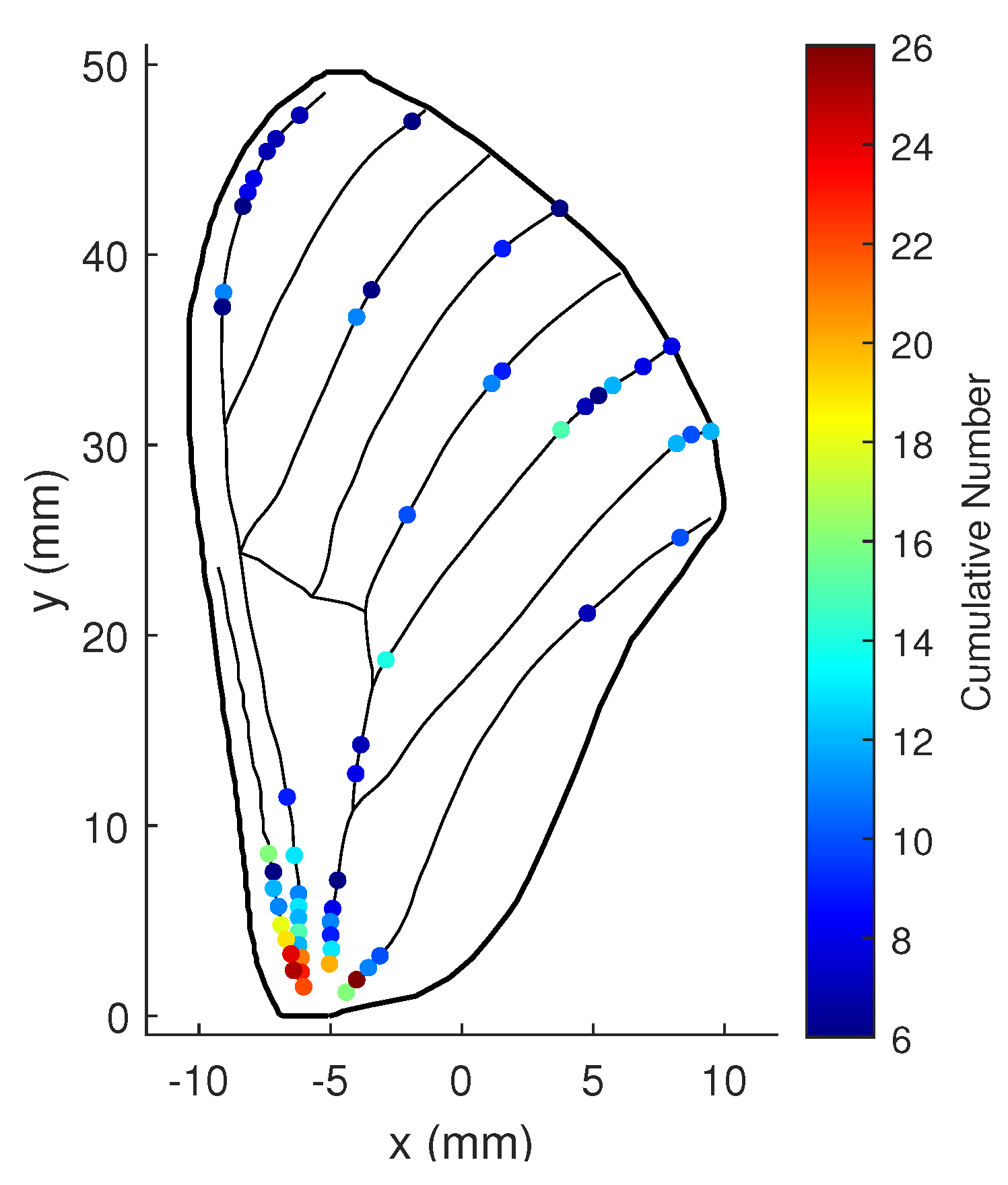
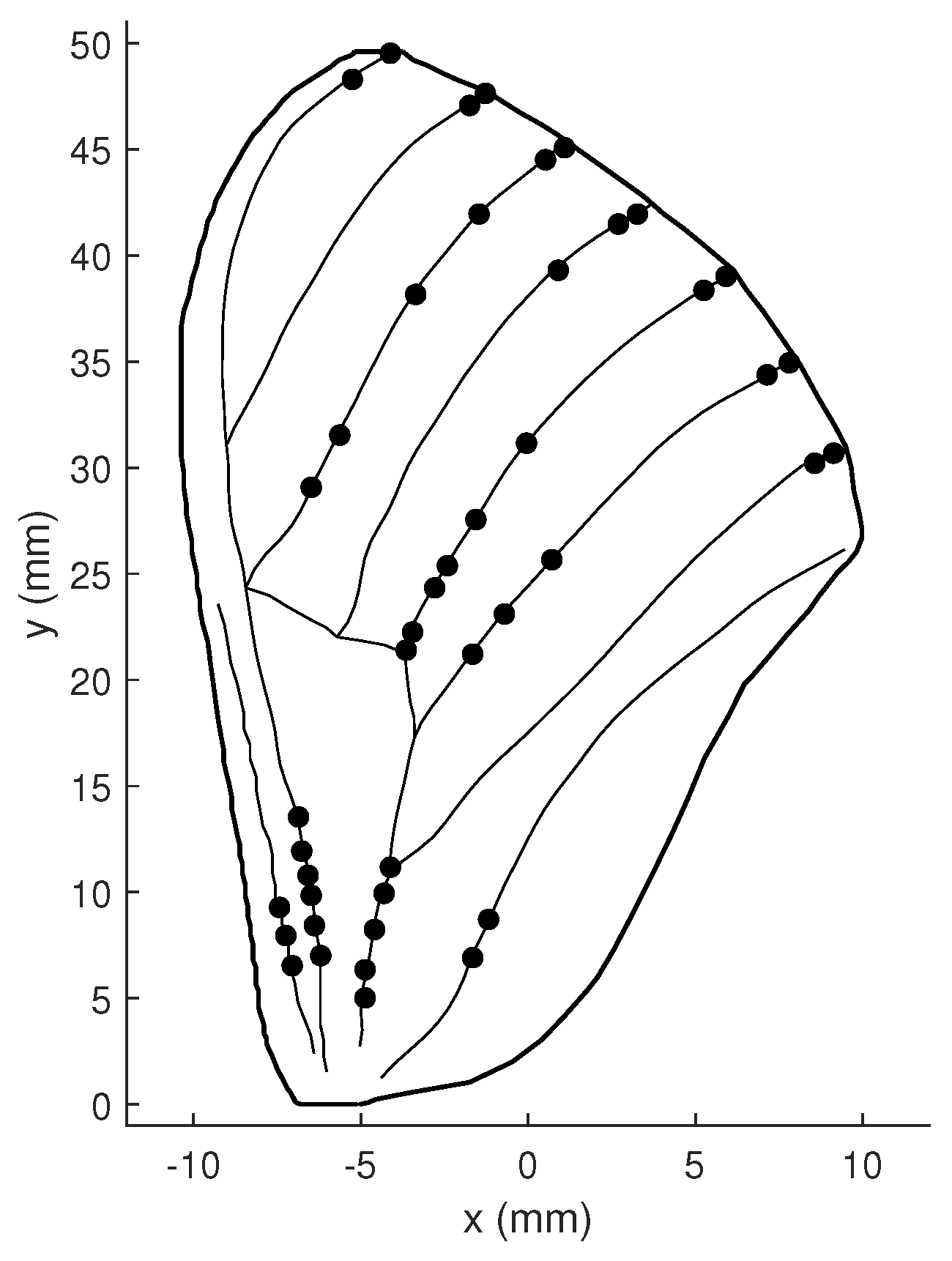
| Observability Matrix | Rank |
|---|---|
| Lie Derivative-Based Observability Matrix | 3 |
| Empirical Observability Gramian Matrix | 3 |
| gPC-based Observability Coefficient Matrix | 6 |
| gPC-based First Order Observability Coefficient Matrix | 3 |
| Approach | Computation Time (s) |
|---|---|
| Lie Derivative-Based Observability Analysis | 0.7940 |
| Empirical Observability Gramian Analysis | 87.1700 |
| gPC-based Observability Analysis | 1.7980 |
| Parameter | Symbol | Value | Unit |
|---|---|---|---|
| Wing-Beat Period | 40 | ms | |
| Memory Length | 40 | ms | |
| Feathering Angle Amplitude | 45 | deg | |
| Position Angle Amplitude | 60 | deg | |
| Mass Density | 220 | kg/m | |
| Chord Length | 22 | mm | |
| Spanwise Length | 50 | mm | |
| Leading Edge Thickness | mm | ||
| Root Thickness | mm | ||
| Decay Rate from LE to TE | − | ||
| Decay Rate from Root to Tip | − | ||
| Mode Frequency of First Bending Mode | 50 | Hz | |
| Mode Frequency of First Torsion Mode | 55 | Hz | |
| Rotation Axis | mm | ||
| Air Fluid Density | kg/m | ||
| Delay of STA Function | a | 5 | ms |
| Width of STA Function | b | 4 | ms |
| STA Frequency | Hz | ||
| Slope of NLA Function | c | − | |
| Half-Maximum position of NLA Function | d | − | |
| Normalization Constant | − |
Publisher’s Note: MDPI stays neutral with regard to jurisdictional claims in published maps and institutional affiliations. |
© 2022 by the authors. Licensee MDPI, Basel, Switzerland. This article is an open access article distributed under the terms and conditions of the Creative Commons Attribution (CC BY) license (https://creativecommons.org/licenses/by/4.0/).
Share and Cite
Jin, B.; Xu, H.; Peng, J.; Lu, K.; Lu, Y. Derivative-Free Observability Analysis for Sensor Placement Optimization of Bioinspired Flexible Flapping Wing System. Biomimetics 2022, 7, 178. https://doi.org/10.3390/biomimetics7040178
Jin B, Xu H, Peng J, Lu K, Lu Y. Derivative-Free Observability Analysis for Sensor Placement Optimization of Bioinspired Flexible Flapping Wing System. Biomimetics. 2022; 7(4):178. https://doi.org/10.3390/biomimetics7040178
Chicago/Turabian StyleJin, Bingyu, Hao Xu, Jicheng Peng, Kelin Lu, and Yuping Lu. 2022. "Derivative-Free Observability Analysis for Sensor Placement Optimization of Bioinspired Flexible Flapping Wing System" Biomimetics 7, no. 4: 178. https://doi.org/10.3390/biomimetics7040178




